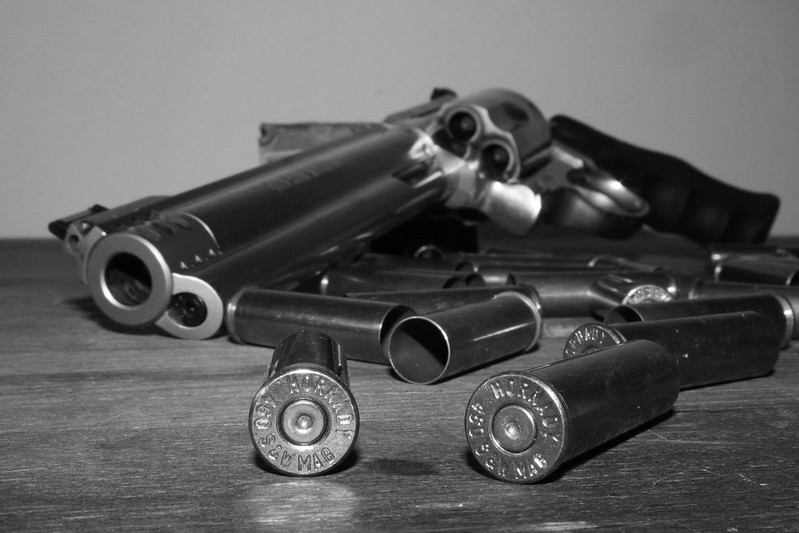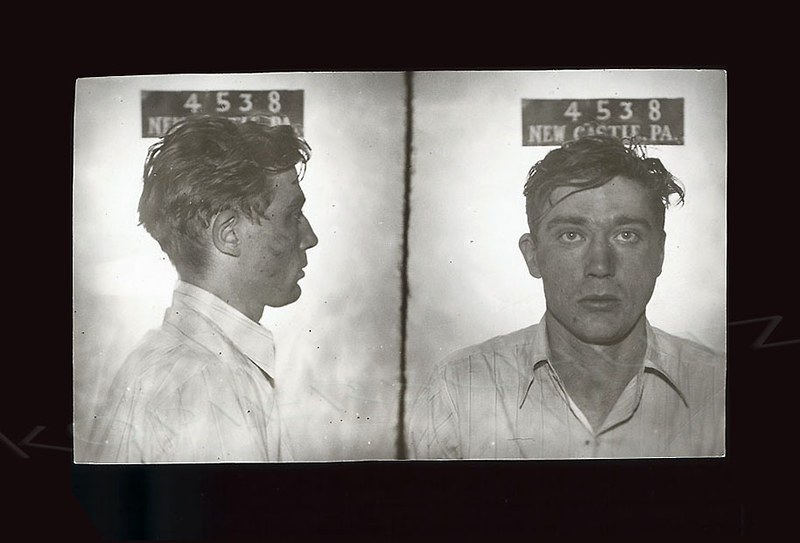This week’s top three summaries: R v Durant, 2019 ONCA 74, R v Nault, 2019 ABCA 37, R v Epure, 2019 ONSC 772.
R. v. Durant (ONCA)
[Feb 4/19] Severance of Counts, Similar Fact, and Excusing a Juror - 2019 ONCA 74 [Reasons by D. Watt J.A. (Grant Huscroft, G. Trotter JJ.A. concurring)]
AUTHOR’S NOTE: An application for severance of two murder charges hinged in this case on a similar fact application. Consequently, both concepts received informative treatment in this decision. The core message in this decision is that similar fact applications have to be decided on the basis of similarity between that ACTS not other connections to the alleged perpetrator. The striking similarity must relate somehow to the nature of the act. Also, joinder in the circumstance of two homicide cases separated by two years in time being run together is highly dependent on similarity. Here, it was simply not there.
Pertinent Facts
"First, Welland. Then, Niagara Falls. Twenty-nine months apart. Two bodies. And some common features." (Para 1)
"Both victims were female, their bodies fully clothed except for their shoes. Both died of blunt force trauma to their head. Both had used cocaine shortly before they died. Both were involved in the sex trade." (Para 2)
"Police charged Michael Durant with two counts of first degree murder arising out of the deaths of these two women, D.D. and C.C. The counts were tried together. A jury deliberated for seven days before finding Michael Durant guilty of both counts of first degree murder." (Para 4)
"The case for the Crown consisted of the evidence of Dana Arnold, Michael Durant's ex-wife, who testified that she helped Durant hide the body of a woman he admitted to having hit over the head with a hammer in the garage of their home in August 2003." (Para 11)
"The Crown also relied on the testimony of several witnesses, including Michael Durant's siblings, his employer, and police officers who told the jury about inculpatory things Durant had said to them or in their presence. In addition, there was evidence that Michael Durant had the opportunity to kill D.D. during the time period within which she was killed." (Para 12)
"D.D. was 32 years old when she was killed. She lived in the Niagara Falls area, struggled with an addiction to cocaine, and supported herself by work in the sex trade. D.D. was killed sometime between sunset on August 4 and the early morning of August 7, 2003." (Para 8)
"D.D. died from blunt force trauma to the back of her head. She suffered three skull fractures. The fatal blow was consistent with having been struck by a hammer or a similar heavy weapon." (Para 9)
"C.C. was 22 years old when she died. She used cocaine and worked in the sex trade. She was last seen on December 4, 2005, although some witnesses claimed to have seen her the following day. She was not reported missing until December 10, 2005." (Para 16)
"On January 24, 2006 C.C.'s body was found in a grassy wooded area near a hydro canal in Niagara Falls. The body was wrapped in two white bedsheets. Wrapped loosely about her neck was a multi-layered length of duct tape, with a second piece wrapped around her left ankle." (Para 17)
"C.C died from blunt force injury to her head. She had suffered several lacerations and fractures to her face and scalp, as well as a fracture to the back of her head likely caused by a blunt force. At the time of her death, C.C. had a puncture wound in her left arm and was under the influence of cocaine. A single sperm cell was found in her mouth." (Para 18)
The Trial Judge's Ruling on the Similar Fact Application
"The trial judge acknowledged that the evidence did not reveal any hallmark or signature common to both killings. On the other hand, he was satisfied that the evidence disclosed "a number of significant similarities" shared by the killings..." (Para 42)
"In concluding that the evidence on one count was admissible to establish guilt on the other count, the trial judge explained:
[21] To put it all together, I find that the significant similarities are the death of female prostitute who consumed cocaine with the accused at his residence before shedding blood there and being killed by blunt force trauma to the head, then dumped in the open on a rural road in Niagara, fully clothed except for shoes and personal effects. These similarities cause me to conclude that it is probable that the same person killed both victims. The dissimilarities in the time between death and disposal of the bodies are readily attributable to the greater availability of a place of cold storage in the winter, and the availability of a motor vehicle. A motor vehicle could be available to a person at some times in his life, but not so readily at other times. In my view, the dissimilarities do not significantly diminish the probative value of the evidence. The existence of an evidentiary link between the accused and each set of similar facts is admitted. Accordingly, the jury will be allowed to use the evidence on each count in deciding the other, subject to the instructions set out in the Arp case.
The Trial Judge's Ruling on the Severance Application
"The trial judge considered that the most influential factors informing his decision on severance were:
i. the appellant's asserted desire to testify on the count relating to D.D., but not on the count relating to C.C.;
ii. prejudice; and
iii. the interest in proceeding efficiently." (Para 46)
The trial judge discounted the risk of prejudice to the accused in trying the cases together. (Para 46)
The Law of Severance of Charges
"Orders for severance of counts under s. 591(3)(a) are discretionary. They do not issue as of right. The section confers a discretion and sets a standard governing its exercise. To engage the discretion, the judge must be satisfied that "the interests of justice" require severance. But s. 591(3)(a) is unrevealing of the factors or considerations of which the judge may or must take account in deciding whether "the interests of justice" require severance." (Para 71)
"In general terms, the phrase "interests of justice" endeavours to balance an accused's interest in being tried on evidence properly admissible against him or her and society's interest that justice be done in a reasonably efficient and cost-effective manner: Last, at para. 16; Jeanvenne, at para. 28." (Para 72)
"Over time courts have added content to the ubiquitous phrase "interests of justice" as it appears in s. 591(3)(a). They have done so by designating a number of factors as worthy of consideration in determining where the interests of justice lie in any factual matrix, but counselling against the dispositive influence of any specific factor. Illustrative of the factors are these:
i. general prejudice to the accused as a result of the influence of the volume of evidence adduced and the effect of verdicts across counts;
ii. the legal and factual nexus between or among counts;
iii. the complexity of the evidence;
iv. the desire of the accused to testify on one or more counts but not on another or others;
v. the possibility of inconsistent verdicts;
vi. the desire to avoid a multiplicity of proceedings;
vii. the use of evidence of similar acts;
viii. the length of trial;
ix. prejudice to the accused's right to be tried within a reasonable time; and
x. the existence or likelihood of antagonistic defences.
See, Last, at para. 18; Jeanvenne, at para. 29. (Para 73)
"the relationship between the propriety of joinder and the admissibility of evidence of similar acts across counts of a multi-account indictment. Where the evidence of similar acts is alleged to be evidence relating to other count or counts of a multi-count indictment, the trial judge will be required to consider the admissibility of the allegedly similar acts in deciding whether some counts should be severed from others. But admissibility and severance are different issues with different burdens of proof. Severance relates to the propriety of joinder and requires that the accused demonstrate, on a balance of probabilities, that the interests of justice requires severance. The reception of evidence of similar acts to be applied across counts is an issue of admissibility which requires the Crown to establish, also on a balance of probabilities, that the evidence ought to be admitted by exception to the general rule of exclusion: Arp at para. 52. It does not follow that because the trial will proceed on a multi-count indictment that the evidence given on one count will apply to all other counts: Arp, at para. 52." (Para 77)
"The discretionary nature of severance decisions has implications for appellate review of those decisions. Decisions on severance may be set aside on appellate review only where the appellate court is of the view that the decision is unjudicial or has resulted in an injustice: Last, at para. 21; Jeanvenne, at para. 26. These grounds involve different inquiries. On an allegation that the decision was unjudicial, the court looks to the circumstances when the ruling was made to determine whether the decision was flawed by an error of law or principle or was unreasonable. In determining whether the ruling resulted in an injustice, the court looks at the entirety of how the trial and verdicts unfolded: Jeanvenne, at para. 27." (Para 79)
The Law of Similar Fact Applications
"Evidence of similar acts or extrinsic misconduct is a kind of character evidence: bad character evidence. It invites a trier of fact to conclude from specific prior incidents of misconduct that an accused is a person of a certain character or disposition. And then to use that character or disposition to support an inference of guilt of a specific offence or offences with which that accused is charged." (Para 80)
"It is well-settled that where evidence of similar acts is proposed for admission to identify an accused as the person responsible for a crime, the authorities require a high degree of similarity. The descriptives vary but include phrases such as "strikingly similar", "so highly distinctive or unique as to constitute a signature", or "fingerprints at the scene of the crime" that would safely differentiate the alleged perpetrator from other possible assailants: Handy, at paras. 77, 80." (Para 89)
"For evidence of similar acts to be admissible on the issue of identification, it is not sufficient that the evidence reveal a common actor. Somehow those acts must be linked to the accused. In other words, there must be some evidence of a linkage or nexus between the similar acts and the accused as their author. There must be some evidence, something beyond mere opportunity or possibility, that provides this nexus: Arp, at para. 56; Perrier, at para. 24." (Para 91)
The Error in The Trial Judgement
Similar Fact
"The decision in Arp teaches that in assessing the similarity of the acts, a trial judge should only consider the manner in which the acts were committed and not evidence of the accused's involvement in those acts. And it is the manner in which the acts were committed that must measure up to this demanding standard of similarity when the evidence is proposed for admission on the issue of identity." (Para 101)
"In this case, the trial judge articulated the proper test for the admissibility of similar acts and appreciated that a high degree of similarity was required between the offences since the evidence was tendered on the issue of identity. But in applying the test, he erred in three respects and reached an unreasonable conclusion." (Para 103)
"First, the trial judge failed to appreciate that what was being offered as evidence of a similar act was evidence of a single incident separated by more than two years from the offence on which it was offered as proof. Evidence of similar acts is tendered to negate the likelihood of coincidence as an explanation for the acts. The likelihood of coincidence diminishes with the number of similar incidents and the degree of their similarities. This was a single incident lacking any signature feature and with only a few generic similarities falling well short of what is required." (Para 104)
"Second, the trial judge appears to have misapprehended the impact of the bloodstains on the underside of the stair riser in connection with the death of C.C. The stains cannot be dated and were not consistent with the amount of blood expected had she been killed there." (Para 105)
"Third, in assessing the similarities in the manner in which the offences were committed and thus the acts were similar, the trial judge misused the evidence linking the appellant to the conduct. It is the acts that must be similar, not the actor." (Para 106)
Severance
"Setting to one side the similar act issue, this was a close case for joinder. The trial judge acknowledged that apart from the fact that the same accused was charged with both murders, there was neither a factual nor a legal nexus between the counts. The offences occurred two years apart. The appellant advanced an objectively plausible claim that he wanted to testify on one count (D.D.) but not on the other. And the evidence on one count (D.D.) was significantly stronger than that on the other, thereby enhancing the prospect of moral prejudice in the absence of evidence of similar acts." (Para 109)
"That evidence of similar acts was being admitted was a controlling factor in the trial judge's decision to deny severance. When the evidence of similar acts is removed from the analysis and the stringent standards of Jeanvenne is applied, the result should be severance and not joinder." (Para 110)
Juror Discharge
"The information of which Crown counsel advised the trial judge also included W.K.'s recollection that the juror had offered his condolences to her after C.C. died about six years before the trial. W.K. said she had been to the juror's home about three times, but had not seen him for a year." (Para 116)
"In answer to the trial judge's questions, the juror acknowledged that he knew a woman whose first name was W., but did not know her last name. He had seen her at the courthouse that morning but had no idea about her relationship to C.C. The juror said that he had never been at W.K.'s home. He did not recall ever having expressed his condolences to her over C.C.'s death. They had never discussed the case. He had not spoken to W.K. for a long time, about a year or two." (Para 119)
"The trial judge had the juror brought back into the courtroom and asked him some further questions in the absence of the other 11 jurors. He described W.K. as an acquaintance, not a friend. He had only seen her at the bar, the last occasion about one and one-half to two years before trial. The juror said that this acquaintance would not interfere with his ability to adhere to his oath to decide the case on the evidence and to give the accused the benefit of any reasonable doubt." (Para 125)
"It is uncontroversial that lack of impartiality on the part of a selected juror can constitute "other reasonable cause" to discharge that juror under s. 644(1) of the Criminal Code: R. v. Tsoumas (1973), 11 C.C.C. (2d) 344 (Ont. C.A.), at p. 345; R. v. Andrews (1984), 13 C.C.C. (3d) 207 (B.C.C.A.), at p. 212. The test applicable at this stage to rebut the presumption of impartiality is that of reasonable apprehension of bias: R. v. Dowholis, 2016 ONCA 801, 133 O.R. (3d) 1, at para. 19." (Para 149)
"The apprehension of bias must be a reasonable one, held by reasonable and right-minded persons, applying themselves to the question and obtaining the required information about it. The grounds for the apprehension must be substantial. The test is what would an informed person, viewing the matter realistically and practically — and having thought the matter through — conclude: R. v. S. (R.D.), [1997] 3 S.C.R. 484, at paras. 31 and 109." (Para 150)
"In my respectful view, the trial judge erred in failing to discharge the juror because he failed to give appropriate consideration to the importance of the appearance of fairness in deciding the suitability of the juror to continue. The effect of the trial judge's decision was to permit a juror, who had some kind of connection to the step-mother of one of the victims, a person whose name was mentioned as a potential Crown witness and one who had vigorously advocated against what she considered unfair treatment by the justice system of sex trade workers, to determine the guilt of the person accused of murdering her step-daughter." (Para 156)
The appeal was allowed. (Para 219)
R v Nault (ABCA)
[Jan 31/19] Inadmissibility of Prior Consistency in a 911 Call - 2019 ABCA 39 [Michelle Crighton J.A., Jo'Anne Strekaf J.A., and Jolaine Antonio J.A.]
AUTHOR’S NOTE: 911 audio recordings are usually admissible for the truth of their contents under the res gestae exception to the hearsay rule. This decision reminds us that, even when admissible in this way, 911 audio is not admissible to enhance credibility of the declarant through consistency.
Pertinent Facts
"The Crown's key witness, Sheena McMillan, called 911 to report that her estranged partner, the appellant Kevin Nault, had started a fire in his duplex. First responders attended and the adjacent duplex was evacuated. Mr. Nault and two dogs were found inside his residence, all suffering significant injuries from fire and smoke. Mr. Nault was convicted of several counts relating to arson, cruelty to animals, and possession of a shotgun found in the duplex." (Para 1)
"At trial, a recording of Ms McMillan's call to 911 was admitted as res gestae by consent, with no discussion of the use that could be made of it. Ms McMillan testified and gave evidence generally consistent with her statements in the 911 call. Mr. Nault now alleges that the trial judge used her out-of-court statements to bolster the credibility of her testimony and thereby erred." (Para 2)
Ms. McMillan claimed that she last saw Nault holding a jerry can of gas and then heard him pouring it on the floor as she left before the fire started (Para 9)
Mr. Nault testified that he had tried to commit suicide using sleeping pills and left a note. He woke to Ms. McMillan pointing him to a shotgun and handing him a cigarette and lighter saying, "You know what to do." He said that when he stuck the lighter, a spark fell and the whole room lit on fire. He argued that Ms McMillan tried to kill him or he started the fire by accident (Para 11-12)
Prior Consistent Statements
"Prior consistent statements are viewed with caution because there is a danger in associating repetition with reliability. The fact that a witness has said something more than once does not make it more likely to be honest or accurate: R v Sylvain, 2014 ABCA 153 at para 74 (per Slatter JA, concurring); R v L(DO) (1991), 6 CR (4th) 277 at 309 (Man CA), rev'd [1993] 4 SCR 419, 25 CR (4th) 285; R v Engen, 2011 ONCJ 814, 2011 CarswellOnt 15499 at para 84. Therefore, as explained by David M. Paciocco, "The Perils and Potential of Prior Consistent Statements: Let's Get it Right" (2013) 17 Can Crim L Rev 181 at 186, the common law has developed:
. . . two important rules that apply even where prior consistent statements are admissible pursuant to exceptions. The first is the "prohibited inference." Even where a prior consistent statement is admitted, "it is impermissible to assume that because a witness has made the same statement in the past, he or she is more likely to be telling the truth." The second is the "rule against corroboration." Even where a prior consistent statement is admitted, it is an error to treat the prior consistent statement as corroborating the in-court testimony. [citations omitted]" (Para 19)
"In his credibility analysis, the trial judge did not refer to the circumstances in which the 911 call was made. He wrote that the call "confirmed" Ms McMillan's testimony. This was a direct violation of the rule against corroboration. He added that she had not reviewed the 911 call before testifying, suggesting that she had not tailored her testimony to match it. This was a variation of the prohibited inference of reliability from repetition. Regardless of any other reasoning he could have used regarding the 911 call, the reasoning the trial judge actually used was erroneous." (Para 23)
R v Epure (ONSC)
[Feb 1/19] – Sentencing - Conditional Discharge for Assault Causing Bodily Harm - Rehabilitation Prior to Sentencing – 2019 ONSC 722 [Durno J.]
AUTHOR’S NOTE: In this decision, Justice Durno, sitting in Summary Conviction Appeal court imposed a conditional discharge for the offence Assault Causing Bodily Harm. The result is highly unusual, but can be replicated with the appropriate facts. The rehabilitation that occurred after the offence was key to this decision.
Pertinent Facts
"The appellant was convicted of assault causing bodily harm and assault. The trial judge imposed a 12 month conditional sentence followed by 12 months probation concurrent on both counts. Mr. Epure appealed the convictions and sentences. I allowed his conviction appeal in regards to the assault and dismissed his appeal of the assault causing bodily harm conviction: 2018 ONSC 4747. The Crown has since withdrawn the assault charge." (Para 1)
"The appellant appeals the sentence on the assault causing bodily harm charge seeking an absolute or conditional discharge. The Crown submits the conditional sentence should remain." (Para 2)
"Given that the appellant is now facing one and not two counts, counsel agree that the usual deference afforded trial judges' sentencing decisions does not apply: R. v. M.R., 2017 ONCA 985." (Para 3)
"In upholding the conviction, I concluded:
[125] The witnesses said the appellant joined the others in assaulting Nicholson at the same time or that the others "had to step back" and continued to yell during the appellant's assault. Either provides an ample basis upon which to conclude that the appellant's assault on Nicholson was part of the same assault or series of events during which the injuries were caused." (Para 8)
"The appellant is 26 years old. He was born in Romania and immigrated to Canada with his parents in 2002 when he was ten years old. As a child he was bullied in Romania and after moving to Canada. He was diagnosed with Attention Deficit Disorder in his last year at high school and suffers from anxiety, panic attacks and depression. He held a series of jobs before enrolling at the University of Guelph Criminal Justice and Public Policy Program where he was on the Dean's List." (Para 11)
"When sentenced in August, 2017, he was on medical leave as a result of his depression, anxiety and panic attacks. While he had done very well, in the year the incident occurred, as Mr. Lockyer put it in his factum, "his success plummeted." While he had previously had mental health issues they returned in the fall of 2013. Seeking help through the university health network did not solve the problems." (Para 12)
"The appellant had started seeing a psychiatrist a few months before his sentencing. Dr. Bhattacharya recommended anger management counseling. In a November, 2018 letter for the sentence appeal the doctor noted the appellant was taking intensive psychotherapy sessions for his anxiety, depression and attention deficit disorder. Initially, there was a mild paranoid component to his mental state because of the trauma from his arrest and anxiety about the legal issues he was facing. It could be a mild form of Post-Traumatic Stress Disorder. He was working very hard on his issues and had improved tremendously. The appellant is on three medications with regards to his attention deficit disorder, anxiety and depression. He was hospitalized in 2015 and 2017 as a result of his mental health problems." (Para 13)
Aggravating and Mitigating Factors
"There are aggravating factors. First, the injuries suffered by Nicholson are aggravating. This is so for the appellant notwithstanding that he was a party to the offence." (Para 15)
"Second, that Nicholson was unconscious on the ground when the appellant joined is aggravating. He was vulnerable and defenseless." (Para 16)
"Third, multiple young men were involved in the assault on Nicholson." (Para 17)
"Fourth, Nicholson's Victim Impact Statement outlines the significant impact the offence had on him." (Para 18)
"There are also mitigating factors. First, the appellant was a young first offender, 22 at the time and now 26." (Para 19)
"Second, he has been on bail for over four years without further incidents with police. During that time he has completed his university degree." (Para 20)
"Third, he is genuinely remorseful." (Para 21)
"Fourth, there is the psychiatric evidence. While it is not submitted that there is link between the appellant's mental health issues and his offending, there is evidence the impact from his arrest and uncertainty with his future resulted in mild paranoia that could have been a mild form of Post-Traumatic Stress Disorder. I appreciate that most accused persons are anxious and stressed as a result of their arrest and pending trial. The expert evidence takes the impact on this offender somewhat higher." (Para 22)
Conditional Discharges
"In terms of the first criteria, it presupposes that specific deterrence is not a relevant consideration, except to the extent required in a probation order, nor is the offender's rehabilitation through correctional or treatment centres required, except to the same extent. The offender is normally a person of good character, without previous conviction and it is not necessary to enter a conviction to deter him or her from future offences or to rehabilitate them. While not essential, that the entry of a conviction may have significant adverse repercussions is a further relevant factor: R. v. Sanchez-Pino (1973), 13 C.C.C. (2d) 53 (Ont.C.A.); R. v. Fallofield (1973), 13 C.C.C. (2d) 450 (B.C.C.A.); R. v. Myers (1997), 37 C.C.C. (2d) 182 (Ont.C.A.)" (Para 25)
"As regards the second criteria, the public interest factor, while the concern for general deterrence must be given due consideration, that does not preclude the judicious use of the provision: Fallofield, at para. 21(6). However, if there is a necessity for a sentence that will deter others, it is factor telling against a discharge: R. v. Lu, 2013 ONCA 324." (Para 26)
"In R. v. Hayes, [1999] O.J. No. 938 (S.C.J.), Hill J. provided the following helpful comments on discharges. Discharges are not restricted to trivial matters. Where an offender has acted out-of-character, perhaps in the context of unusual pressure or stress, a discharge may be fit. Where a criminal record will have a tendency to interfere with employment or perhaps important travel, a discharge may be given serious consideration. A suspended sentence is not necessarily a greater deterrent than a discharge." (Para 28)
" I agree with the Crown that a sentence for an assault causing bodily harm of this nature requires that a message be sent. But jail, whether community-based or in custody, is not the only way to send a message. Otherwise, there would be no general deterrence element to most sentences. As with any area of criminal law that takes into account the public interest, the member of the public considering a sentence must be reasonable, dispassionate and properly informed: R. v. St. Cloud, 2015 SCC 27 (CanLII), [2015] 2 S.C.R. 328, at para. 13. Not one who simply looks at the facts of the case. The observer must be one who knows the details of the offence, the offender and takes into account the needs of the community: R. v. Jacko (2010), 2010 ONCA 452 (CanLII), 101 O.R. (3d) 1 (C.A.). " (Para 35)
"For 18 months he stood convicted of assaulting a young woman, a fellow University of Guelph student. That conviction has been quashed. He has undergone psychiatric counseling to address outstanding issues. The effect of his arrest and anxiety pending trial led to psychiatric intervention that has continued for 18 months. He remains unable to work as a result of his mental health conditions. His family have had legal fees to pay. The significant impact on the appellant and his family were outlined in the appellant’s affidavits and his father’s letter filed on the appeal." (Para 37)
"A discharge in these circumstances would be very rare upon arrest and summary conviction trial held within the constitutional timelines, 18 months. However, not only do I have to take into account what has transpired since the incident, but the informed member of the public would as well. While it is a very close call, based on all the circumstances and the case law filed, I am persuaded that in these particular circumstances, a conditional discharge is not contrary to the public interest. An absolute discharge would not satisfy the criteria on these facts." (Para 38)
"The appellant is sentenced to a conditional discharge and 15 months probation on the statutory terms as well as having no contact directly or indirectly with Brett Nicholson. He is continue to attend Dr. Bhattacharya until such time as the doctor or his designate provides written confirmation that no further counseling is required, take counseling for anger management unless written confirmation is provided to the probation officer that he has already completed an anger management course. Finally, he is to perform 75 hours of community service within the first 12 months." (Para 40)






